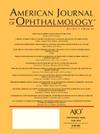Influence of Age and Underlying Etiologies on Outcomes of Strabismus Surgery in the Elderly Population
IF 4.1
1区 医学
Q1 OPHTHALMOLOGY
引用次数: 0
Abstract
Purpose
To investigate the success of strabismus surgery in older adults and determine the impact of age and underlying etiology on surgical outcomes.
Methods
Retrospective review of medical records of patients aged 60 years or older who underwent strabismus surgery at a tertiary eye care center. Surgical motor and sensory outcomes were analyzed.
Results
Of the 562 that met criteria, patients were mostly female (56.1%) with a mean age of 71.7 ± 6.6 years. The majority of patients reported diplopia (85.9%). The most frequent etiologies were paralytic (27.9%), adult-onset esotropia (19.0%), and thyroid eye disease (16.4%). Following initial surgery, motor and sensory surgical success rates were 65.1% and 62.9%. No significant differences in mean age were observed based on sensory success (P = .8529), motor success (P = .1670), or etiology (P = .1069). Etiology was associated with motor and sensory success (P = .0160 and P = .0001, respectively). Adult-onset basic esotropia had higher rates of motor and sensory success (P = .0091), and convergence insufficiency exotropia and recurrent or consecutive strabismus had higher rates of sensory success (P = .0029 and P = .0393, respectively). Among demographic and preoperative characteristics, etiology (P = .0008) predicted sensory success, and etiology (P = .0670) and use of adjustable sutures (P = .0003) predicted motor success. Patients who received adjustable sutures had significantly higher odds (OR = 2.15; 95% CI, 1.42-3.25) of motor success. Motor and sensory success rates improved to 78.1% and 73.3% after reoperation in 82 patients (14.6%).
Conclusions
Etiology was found to be predictor of sensory success, while both etiology and use of adjustable sutures were predictors of motor success. Surgical success was not influenced by increasing age.
NOTE: Publication of this article is sponsored by the American Ophthalmological Society.
年龄和潜在病因对老年人群斜视手术结果的影响。
目的探讨老年人斜视手术的成功率,确定年龄和潜在病因对手术结果的影响。方法回顾性分析在某三级眼科保健中心接受斜视手术的60岁及以上患者的病历。分析手术的运动和感觉结果。结果562例符合标准的患者中,女性居多(56.1%),平均年龄71.7±6.6岁。多数患者报告复视(85.9%)。最常见的病因是麻痹(27.9%)、成人内斜视(19.0%)和甲状腺眼病(16.4%)。初次手术后,运动和感觉手术成功率分别为65.1%和62.9%。在感觉成功(P= 0.8529)、运动成功(P= 0.1670)或病因(P= 0.1069)的基础上,平均年龄无显著差异。病因学与运动和感觉成功相关(P=。0160, P=。0001年,分别)。成人发病的原发性内斜视有较高的运动和感觉成功率(P= 0.0091),会敛功能不全的外斜视和复发性或持续性斜视有较高的感觉成功率(P= 0.0091)。0029, P=。0393年,分别)。在人口学和术前特征中,病因学(P= 0.0008)预测感觉成功,病因学(P= 0.0670)和使用可调节缝线(P= 0.0003)预测运动成功。接受可调节缝合线的患者的风险明显更高(OR = 2.15;95% CI, 1.42-3.25)。82例(14.6%)患者再次手术后,运动和感觉成功率分别提高到78.1%和73.3%。结论病理学是感觉成功的预测因素,而病因学和可调节缝线的使用是运动成功的预测因素。手术成功率不受年龄增长的影响。
本文章由计算机程序翻译,如有差异,请以英文原文为准。
求助全文
约1分钟内获得全文
求助全文
来源期刊
CiteScore
9.20
自引率
7.10%
发文量
406
审稿时长
36 days
期刊介绍:
The American Journal of Ophthalmology is a peer-reviewed, scientific publication that welcomes the submission of original, previously unpublished manuscripts directed to ophthalmologists and visual science specialists describing clinical investigations, clinical observations, and clinically relevant laboratory investigations. Published monthly since 1884, the full text of the American Journal of Ophthalmology and supplementary material are also presented online at www.AJO.com and on ScienceDirect.
The American Journal of Ophthalmology publishes Full-Length Articles, Perspectives, Editorials, Correspondences, Books Reports and Announcements. Brief Reports and Case Reports are no longer published. We recommend submitting Brief Reports and Case Reports to our companion publication, the American Journal of Ophthalmology Case Reports.
Manuscripts are accepted with the understanding that they have not been and will not be published elsewhere substantially in any format, and that there are no ethical problems with the content or data collection. Authors may be requested to produce the data upon which the manuscript is based and to answer expeditiously any questions about the manuscript or its authors.

 求助内容:
求助内容: 应助结果提醒方式:
应助结果提醒方式:


